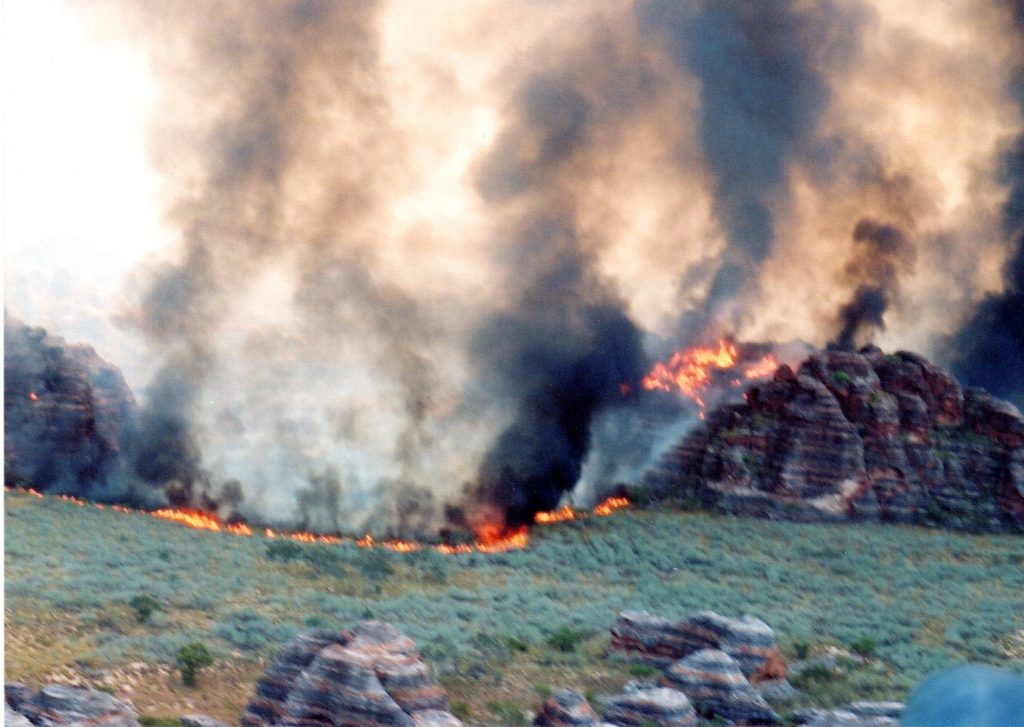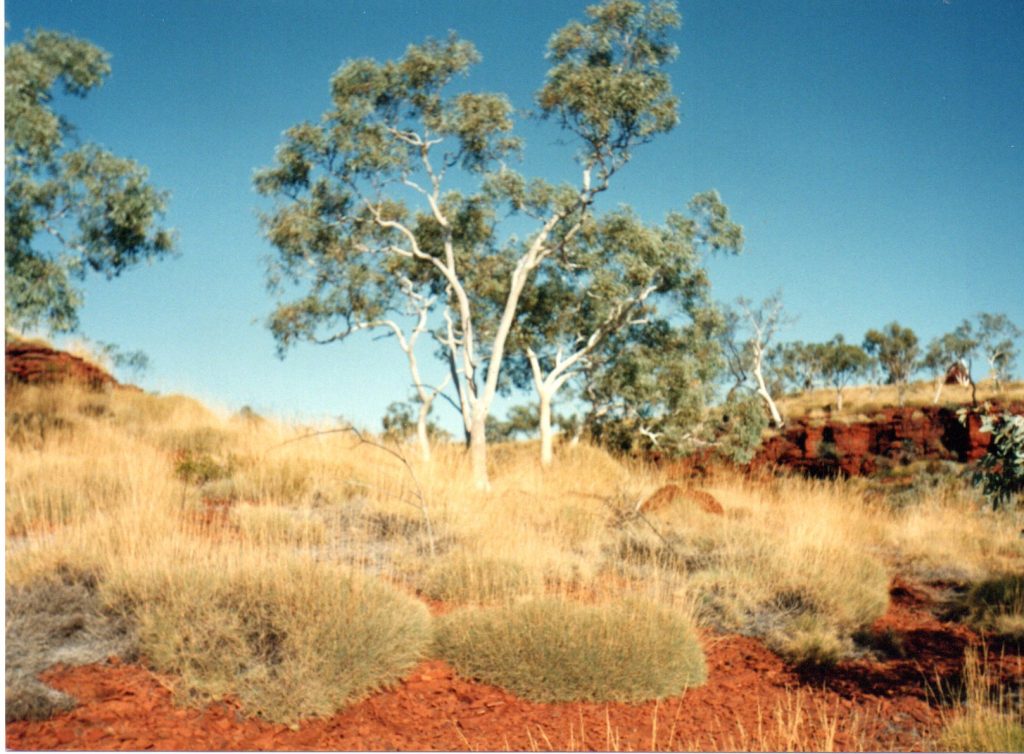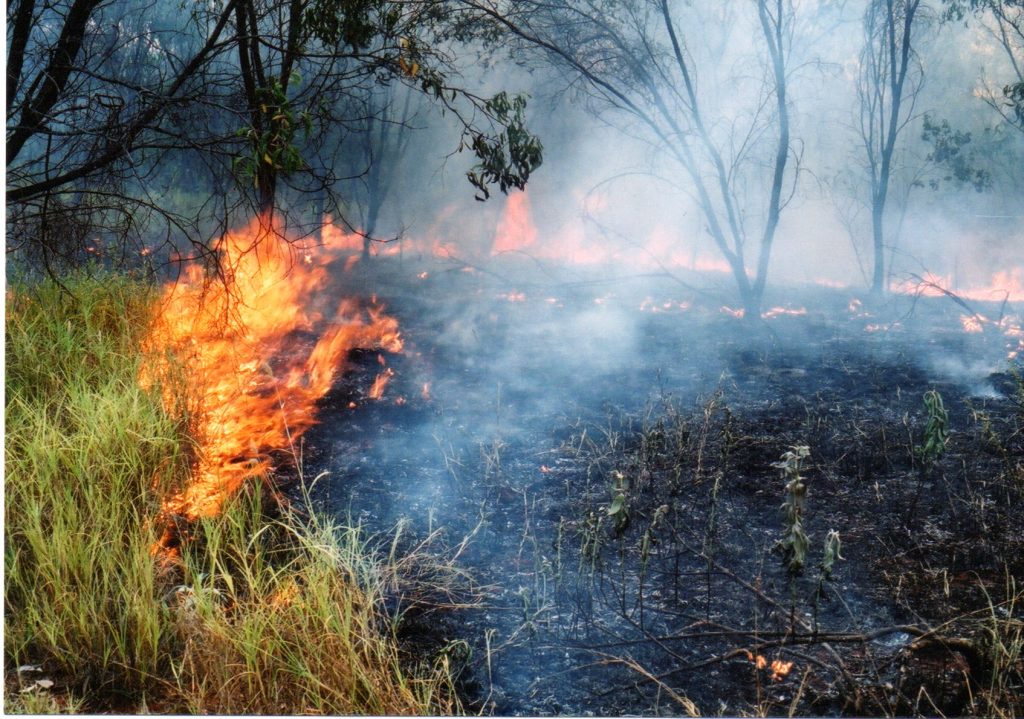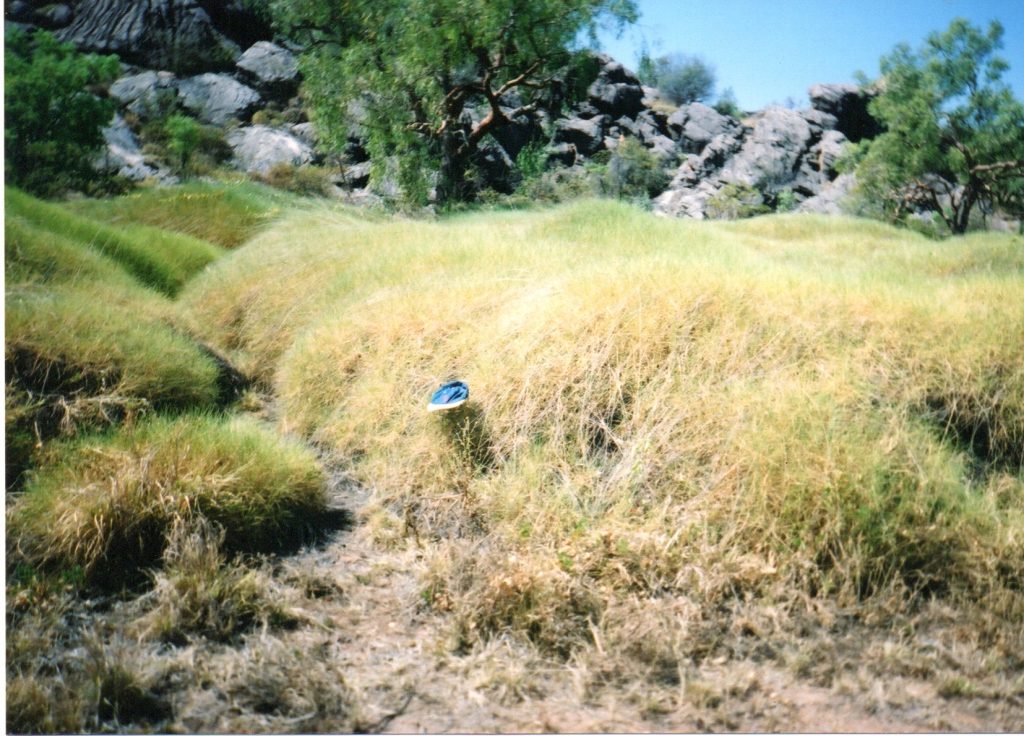SPINIFEX FIRE MANAGEMENT
Spinifex is a critical habitat and food source for many seed-feeding birds and small ground dwelling mammals that inhabit the extensive grassland areas of both the Kimberley and Pilbara regions of Western Australia. It is also an important feed source for cattle stations in these regions. Fire management in Spinifex areas is therefore a critical factor for both pastoral and conservation activities, and needs to take account of the complexity of the genus.
Spinifex (Triodia) species inhabit a broad range of soil types across the landscape from coastal dune systems to the hinterland of the Kimberley and Pilbara. The genus has at least fifty- seven known species.
Spinifex is very susceptible to fire, especially those fires caused by late dry season lightning. Under these, often windy weather conditions, fire intensity is very high and the Spinifex can be greatly reduced or even eliminated from an area.
A late dry season wildfire in the Purnululu National Park. Clearly very severe fire behaviour.
The plant structure ranges from Hummock-forming resinous perennials 1 – 3 m in height with hard foliage to compact tufted non-resinous perennials 0.2 – 0.3 m in height with soft curly foliage, with many forms in between these two extremes.
Fortunately, Spinifex is very resilient in areas where it is the dominant ground cover and if impacted by low intensity fire, will recover from both the root bole re-sprouting and seed germination in the soil after a rain event.
Where Spinifex is not the dominant species and shares the site with annual and perennial grasses, recovery after fire can be very different, especially after a hot late dry season fire. The results depend a lot on whether the root bole was burnt along with the foliage when the soil profile was very dry. Spinifex germinating from soil-stored seed is much slower to recover than weed species after a hot fire event, therefore can be dominated by fast growing weeds that overtake much of the site.
Not all Spinifex species have resinous content in the foliage nor do all species have spines. Many soft Spinifex species are spine-free and are preferred by animals for grazing, whereas the hard Spinifex species, after more than three to four years free from fire, become unpalatable to cattle and are therefore scheduled for periodic burning on stations to reinvigorate young green growth that is more palatable.
Soft Spinifex that requires a burn to maintain forage value.
Soft Spinifex requires much less fire management unless it is to remove the risk of fire from near assets or to enhance the safety of station dwellings or recreation sites in remote locations. In this case regular mild intensity burns can be used to maintain grazing value for both cattle and native fauna.
Fire can also be used to remove weed invasion by making use of the senesced Spinifex material within the area and burning with a very mild fire early in the wet season after weeds have germinated and the soil profile is moist.
This is a cool wet season burn designed to reduce weed competition with the Spinifex.
Burning technique is thus a critical factor to maintain Spinifex, and has to be varied to suit the species concerned. Particular care is required for resinous species that burn with greater intensity and flame length.
Where fire is to be used to protect assets by removing a build-up of fuel or to renovate pasture, it is important to consider carefully the seasonal timing of the burn, especially if the site comprises mixed grass species where the regeneration of Spinifex will need to compete with vigorous grass species that grow much faster than Spinifex.
If the burn has been planned for the late dry season when soil conditions are dry, resulting in the possibility of the mature plant boles being burnt, it is best to wait until the build-up season thunderstorms have provided some soil moisture that will reduce the risk of root boles burning.
To successfully achieve enough coverage of a planned burn area it is important to plan the burn with wind strengths in the range of 10 to 15 K/Ph, and to work into the wind from a secure boundary.
Mature Spinifex will burn and spread when it is raining in heavy mature stands like the image shown below. Once alight, fire will create a flame length up to five times the plant height, enabling fire to spread from plant to plant with wind strength greater than 10K/hr.
Overmature Spinifex that needs careful burning for regeneration.
Rangeland areas dedicated to biodiversity conservation need to provide a diverse range of vegetation ages to provide the necessary habitat for the extensive range of seed-feeding birds and ground dwelling mammals that rely on these extensive grassland areas for their existence. Careful planning of burning is essential to provide a mosaic of Spinifex ages.
Kevin White, July 2019




